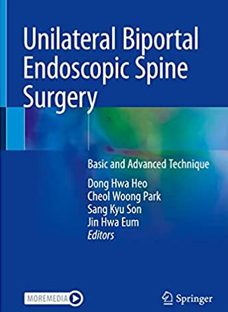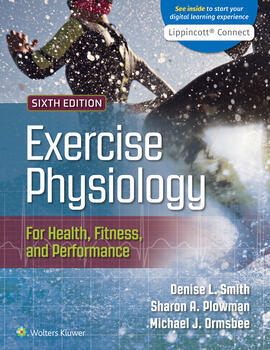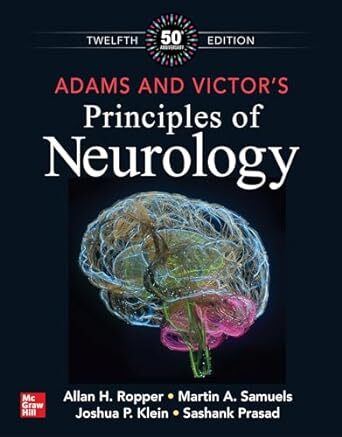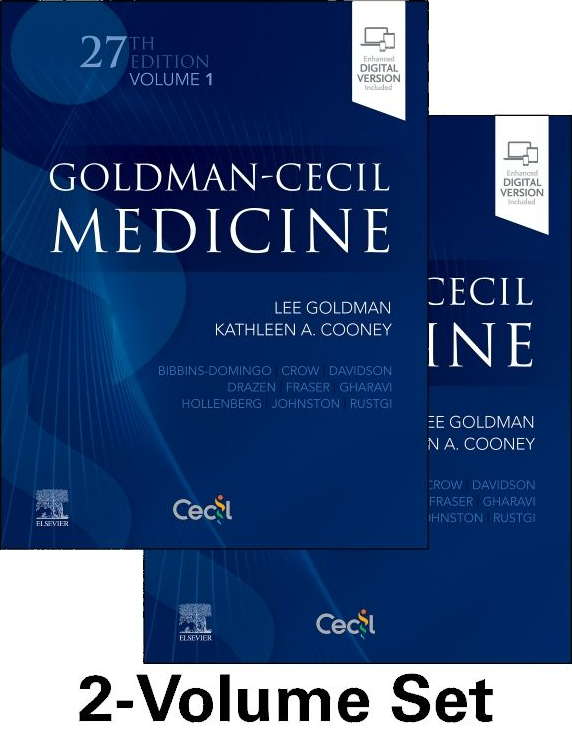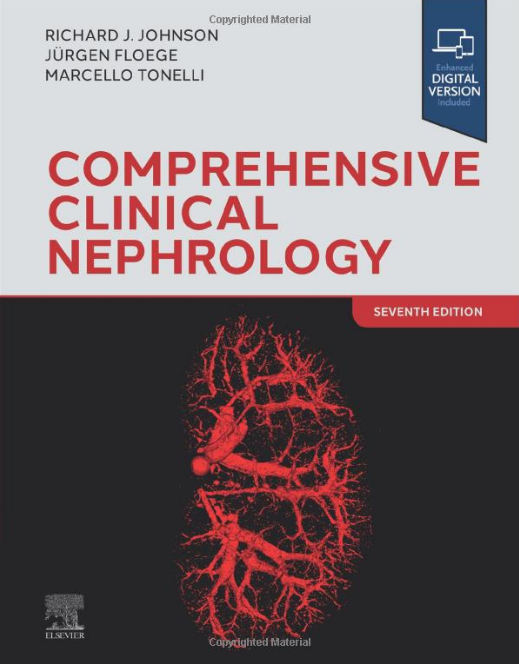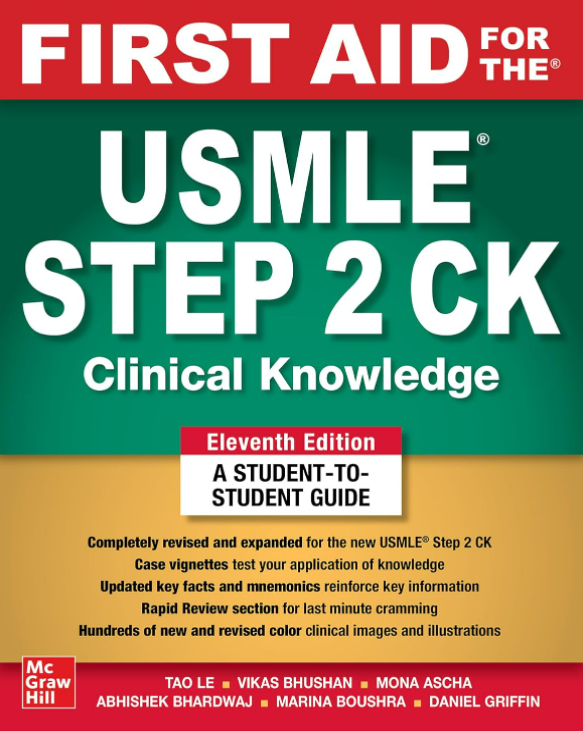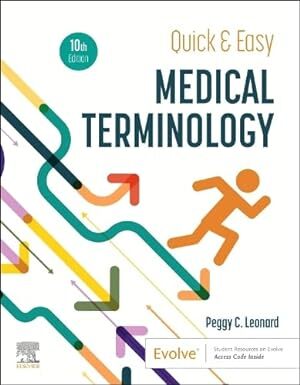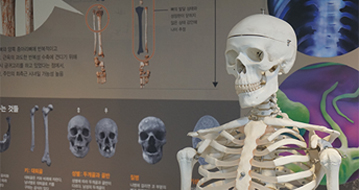About the A uthor s vi
Pr ef ace viii
User’ s Guide xi
Ac knowledgments xv
CHAPTER 1 The W arm-Up 1
Introduction 2
What Is Exercise Physiology and Why
Study It? 3
Overview of the T ext 3
The Exercise Response 5
Ex ercise Modality 6
Ex ercise Intensity 6
Ex ercise Dur ation 7
Ex ercise Cate g ories 7
Ex ercise Response P atter ns 8
Ex ercise Response Interpr etation 9
T raining 11
Health-Related v er sus Sport-Specific Ph ysical F itness 11
Dose-Response Relationships 13
T r aining Principles 14
P eriodization 16
T r aining Adaptations 19
Exercise and T raining as Stressors 21
Sely e’ s Theor y of Str ess 21
Selye’s Theory of Stress Applied to Exercise and
T r aining 22
T r aining Adaptation and Maladaptation 23
ME T ABOLIC S Y STEM UNIT 27
CHAPTER 2 Energy Production 28
Introduction 28
Adenosine T riphosphate 29
Cellular Respiration 30
Carbohydrate Metabolism 31
Sta g e I: Glycolysis Ov er view 32
Stage II: Formation of Acetyl Coenzyme A 37
Sta g e III: Kr ebs Cycle 39
Stage IV: Electron Transport and Oxidative
Phosphor ylation 40
A TP Production from Carboh ydr ate 42
Fat Metabolism 44
Beta-Oxidation 46
A TP Production from F atty Acids 47
Ketone Bodies and Ketosis 47
Protein Metabolism 47
T r ansamination and Oxidativ e Deamination 48
A TP Production from Amino Acids 48
The Regulation of Cellular Respiration and ATP
Production 49
Intracellular Regulation 49
Extr acellular Re gulation 49
Fuel Utilization at Rest and during Exercise 52
CHAPTER 3 Anaerobic Metabolism during
Exercise 59
Introduction 60
The Energy Continuum 60
Anaerobic Energy Production 63
Alactic Anaerobic PC Production 63
Lactic Acid/Lactate Production 63
Measurement of Anaerobic Metabolism 69
Labor ator y Procedur es 96
F ield T ests 73
The Anaerobic Exercise Response 73
Oxygen Deficit and Excess Postexercise Oxygen
Consumption 73
A TP-PC Chang es 76
Lactate Chang es 76
Benefits of Lactate 82
Why Is Lactate Accumulation a Problem? 83
Time Frame for Lactate Removal Postexercise 84
Male versus Female Anaerobic Exercise
Characteristics 86
The A v ailability and Utilization of A TP-PC 86
The Accumulation of Lactate 86
Mec hanical P ow er and Capacity 87
Anaerobic Exercise Characteristics of
Children 87
The A v ailability and Utilization of A TP-PC 88
The Accumulation of Lactate 88
The Lactate Thr eshold(s) 88
Mec hanical P ow er and Capacity 88
Mec hanisms 89
Anaerobic Exercise Characteristics of Older
Adults 90
The A v ailability and Utilization of A TP-PC 91
The Accumulation of Lactate 91
Lactate Thr eshold(s) 91
Mec hanical P ow er and Capacity 92
C on ten ts CHAPTER 4 Aerobic Metabolism during
Exercise 102
Introduction 103
Laboratory Measurement of Aerobic Metabolism 103
Calorimetry 103
Spirometry 103
Aerobic Exercise Responses 104
Oxygen Consumption and Carbon Dioxide
Production 104
The Oxygen Cost of Breathing 111
Respiratory Quotient/Respiratory Exchange
Ratio 112
Estimation of Caloric Expenditure 114
The Metabolic Equivalent 116
Field Estimates of Energy Expenditure during
Exercise 118
Metabolic Calculations Based on Mechanical Work or
Standard Energy Use 118
Motion Sensors and Accelerometers 120
Activity Recalls and Questionnaires 121
Efficiency and Economy 122
Efficiency 122
Economy of Walking and Running 125
CHAPTER 5 Metabolic Training Principles and
Adaptations 139
Introduction 139
Application of the Training Principles for Metabolic
Enhancement 139
Specificity 140
Overload 140
Rest/Recovery/Adaptation 144
Progression 144
Individualization 145
Maintenance 145
Retrogression/Plateau/Reversibility 146
Warm-Up and Cooldown 146
Metabolic Adaptations to Exercise T raining 147
Substrate or Fuel Supply 147
Enzyme Activity 150
Oxygen Utilization (7) 152
ATP Production, Storage, and Turnover 156
The Influence of Age and Sex on Metabolic Training
Adaptations 158
Adaptations in Children and Adolescents 158
Male-Female Differences in Adaptations 158
Adaptations in Older Adults 158
CHAPTER 6 Nutrition for Fitness and
Athletics 168
Introduction 169
Nutrition for T raining 169
Kilocalories 171
Carbohydrates (CHO) 174
Protein 181
Fat 187
Vitamins 188
Minerals 189
Nutrition for Competition 191
Carbohydrate Loading (Glycogen
Supercompensation) 191
Pre-Event Meal 192
Feeding during Exercise 194
Fluid Ingestion during and after Exercise 195
Nutrient Timing 195
Eating Disorders 196
Definitions and Diagnostic Criteria 196
Risk Factors 198
The Consequences of Eating Disorders 199
Prevention and Treatment 200
CHAPTER 7 Body Composition: Determination
and Importance 212
Introduction 213
Body Composition Assessment 215
Laboratory T echniques 215
Field Tests of Body Composition 221
Overweight and Obesity 229
What Happens to Adipose Cells in Obesity? The
Cellular Basis of Obesity 230
Fat Distribution Patterns 232
Health Risks of Overweight and
Obesity 235
CHAPTER 8 Body Composition and Weight
Control 249
Introduction 250
The Caloric Balance Equation 250
Food Ingested 251
Resting or Basal Metabolism 254
Thermogenesis 258
Exercise/Activity Energy Expenditure 261
The Effects of Diet, Exercise Training, and Diet
Plus Exercise Training on Body Composition and
Weight 262
The Effects of Diet on Body Composition and
Weight 263
The Effects of Exercise Training on Body Composition
and Weight 264
The Effects of Diet Plus Exercise Training on Body
Composition and Weight 270
The Effects of Diet, Exercise Training, and
Diet Plus Exercise Training on Abdominal
Obesity 270
Application of the Training Principles for Weight
and Body Composition Loss and/or
Control 272
Specificity 272
Overload 275
Rest/Recovery/Adaptation 276
Progression 276
Individualization 276Retrogression/Plateau/Reversibility 277
Maintenance 277
Weight Cycling 277
Making Weight for Sport 283
CARDIOVASCULAR-RESPIRATORY SYSTEM UNIT 295
CHAPTER 9 Respiration 296
Introduction 297
Structure of the Pulmonary System 297
The Conductive Zone 297
The Respiratory Zone 299
Mechanics of Breathing 299
Respiratory Circulation 301
Minute Ventilation/Alveolar Ventilation 301
Major Pulmonary Ventilation V ariables 303
Measurement of Lung Volumes 304
Static Lung Volumes 304
Dynamic Lung Volumes 305
Spirometry 305
Gas Dilution 305
Standardization 305
Partial Pressure of a Gas: Dalton’s Law 307
Regulation of Pulmonary Ventilation 309
The Respiratory Centers 309
Anatomical Sensors and Factors Affecting Control of
Pulmonary Ventilation 310
Gas Exchange and Transport 312
Gas Exchange: Henry’s Law 312
External Respiration 313
Major External Respiration Variables 315
Internal Respiration 315
Major Internal Respiration Variables 315
Oxygen Transport 315
Carbon Dioxide Transport 319
The Respiratory System and Acid-Base
Balance 319
CHAPTER 10 Respiratory Exercise Response,
Training Adaptations, and Special
Considerations 324
Introduction 325
Response of the Respiratory System to
Exercise 326
Short-Term, Light to Moderate Submaximal Aerobic
Exercise 326
Long-Term, Moderate to Heavy Submaximal Aerobic
Exercise 330
Incremental Aerobic Exercise to Maximum 330
Static Exercise 334
Locomotor-Respiratory Coupling (Entrainment)
during Exercise 334
Respiratory Limitations to Exercise 336
Exercise-Induced Arterial Hypoxemia 336
Respiratory Muscle Fatigue 337
Excessive Fluctuations in Intrathoracic
Pressures 337
The Influence of Sex and Age on Respiration at Rest
and during Exercise 337
Male-Female Respiratory Differences 337
Children and Adolescents 339
Older Adults 341
Respiratory Muscle Training Principles and
Adaptations 344
Controlled-Frequency Breathing Training 345
Whole Body Respiratory Training Principles and
Adaptations 345
Lung Volumes and Capacities 345
Pulmonary Ventilation 346
External and Internal Respiration 346
Why Are There So Few Respiratory Adaptations to
Whole Body Exercise Training? 347
Special Considerations 348
Altitude 348
Physical Activity and Pollution 353
CHAPTER 11 The Cardiovascular System 365
Introduction 366
Overview of the Cardiovascular System 366
The Heart 366
The V ascular System 377
Blood 381
Cardiovascular Dynamics 384
Cardiac Output (Q
.
) 384
Mean Arterial Pressure 384
Total Peripheral Resistance 384
Principles of Blood Flow 385
Regulation of the Cardiovascular System 386
Neural Control 386
Anatomical Sensors and Factors Affecting Control of
the Cardiovascular System 386
Neurohormonal Control 387
Measurement of Cardiovascular Variables 388
Cardiac Output 388
Stroke Volume 388
Heart Rate 390
Maximal Oxygen Consumption 390
Blood Pressure 393
CHAPTER 12 Cardiovascular Responses to
Exercise 396
Introduction 397
Cardiovascular Responses to Aerobic Exercise 397
Short-Term, Light to Moderate Submaximal Aerobic
Exercise 397
Long-Term, Moderate to Heavy Submaximal Aerobic
Exercise 400
Incremental Aerobic Exercise to Maximum 403
High-Intensity Interval Exercise 410
Upper-Body versus Lower-Body Aerobic
Exercise 410Cardiovascular Responses to Static
Exercise 413
Intensity of Muscle Contraction 413
Blood Flow during Static Contractions 415
Comparison of Aerobic and Static Exercise 415
Cardiovascular Responses to Dynamic Resistance
Exercise 415
Varying Load/Constant Repetitions 416
Varying Load/Repetitions to Failure 416
Constant Load/Repetitions to Failure 417
Male-female Cardiovascular Differences during
Exercise 418
Short-Term, Light to Moderate and Long-Term,
Moderate to Heavy Submaximal
Exercise 418
Incremental Aerobic Exercise to Maximum 419
Static Exercise 420
Cardiovascular Responses of Children and
Adolescents to Exercise 421
Short-Term, Light to Moderate and Long-Term,
Moderate to Heavy Submaximal Exercise 421
Incremental Aerobic Exercise to Maximum 422
Static Exercise 423
Cardiovascular Responses of Older Adults to
Exercise 424
Short-Term, Light to Moderate and Long-Term,
Moderate to Heavy Submaximal
Exercise 424
Incremental Aerobic Exercise to Maximum 424
Static Exercise 425
CHAPTER 13 Cardiorespiratory Training
Principles and Adaptations 431
Introduction 432
Application of the Training Principles to Improve
Cardiorespiratory Fitness 433
Specificity 433
Overload 434
Individualization 443
Rest/Recovery/Adaptation 443
Progression 443
Maintenance 444
Retrogression/Plateau/Reversibility 445
Warm-Up and Cooldown 445
Training Principles and Physical Activity
Recommendations 445
Cardiovascular Adaptations to Aerobic Endurance
Training 447
Cardiac Structure (1) 448
Cardiac Function (2) 448
Vascular Structure (3) 451
Vascular Function (4) 452
Hemodynamics (5) 452
Blood Volume (6) 452
Clot Formation and Breakdown (7) 453
Cardiovascular Adaptations to HIIT 453
Cardiac Structure and Function 454
Maximal Oxygen Consumption 454
Vascular Function 454
Cardiovascular Adaptations to Dynamic Resistance
Training 454
Cardiac Structure 454
Stroke Volume and Heart Rate 454
Blood Pressure 455
Maximal Oxygen Consumption 456
The Influence of Age and Sex on Cardiovascular
T raining Adaptations 457
Male-Female Differences in Adaptations 457
Adaptations in Children and Adolescents 457
Adaptations in Older Adults 458
CHAPTER 14 Thermoregulation 467
Introduction 468
Measurement of Environmental Conditions 468
Measurement of Body T emperature 469
Thermal Balance 470
Heat Exchange 472
Thermoregulation 473
Normal Body T emperature 473
Behavioral and Physiological Thermoregulation 473
Exercise in the Heat 475
Body Temperature during Exercise
in the Heat 475
Heat Exchange during Exercise 476
Cardiovascular Demands of Exercise in the
Heat 477
Factors Affecting Cardiovascular Response to Exercise
in the Heat 479
Fluid Ingestion during and after Exercise 482
Type of Fluid Ingested 482
Exercise-Associated Hyponatremia (EAH) 484
Influence of Sex and Age on the Exercise Response
in Heat 484
Male-Female Differences in Exercise Response in
Heat 484
Exercise Response of Children and Adolescents in the
Heat 485
Exercise Response of Older Adults in the Heat 486
Heat Illness 487
Minor Exertional Heat Illness 487
Serious Exertional Heat Illnesses 488
Prevention of Exertional Heat Illness 489
Exercise in the Cold 490
Cold-Induced Injuries 491
Prevention of Cold-Induced Injuries 491
Influence of Sex and Age on Cold Tolerance 491
CHAPTER 15 Cardiovascular Disease Risk
Factors and Physical
Activity 497
Introduction 498
Progression of Coronary Heart Disease 499Describing Cardiovascular Health and
Disease 500
Cardiovascular Disease 500
Ideal Cardiovascular Health 501
Cardiovascular Disease Risk Factors 502
Cardiorespiratory Fitness and Cardiovascular
Mortality 502
Exercise Training and Modifiable Cardiovascular
Disease Risk Factors 504
Cholesterol-Lipid Fractions 504
Cigarette Smoking 507
Prediabetes and Diabetes Mellitus 508
Hypertension 511
Obesity and the Metabolic Syndrome 512
Physical Inactivity 514
Contributing and Selected Nontraditional Risk
Factors 517
Children and the Cardiovascular Risk
Factors 517
Cholesterol-Lipid Fractions 519
Cigarette Smoking 519
Diabetes Mellitus 520
Hypertension 521
Overweight and Obesity 521
Physical Inactivity 523
NEUROMUSCULAR-SKELETAL SYSTEM UNIT 531
CHAPTER 16 Skeletal System 532
Introduction 533
Skeletal Tissue 533
Functions 533
Regulation of Blood Calcium 534
Levels of Organization 534
Bone Development 535
Measurement of Bone Health 537
Dual-Energy X-Ray Absorptiometry 538
Quantitative Computed T omography 540
Field T ests 540
Bone Loading Questionnaire to Assess Bone
Health 540
Factors Influencing Bone Health 541
Age-Related Changes in Bone 541
Male-Female Differences in Bone Mineral
Density 541
Development of Peak Bone Mass 541
Exercise Response 542
Application of the Training Principles 543
Specificity 544
Overload 545
Rest/Recovery/Adaptation 546
Individualization 547
Retrogression/Plateau/Reversibility 547
Maintenance 547
Warm-Up and Cooldown 547
Skeletal Adaptations to Exercise T raining 547
Special Applications to Health and Fitness 550
Osteoporosis 550
The Female Athlete Triad: A Portion of the Relative
Energy Deficiency in Sport Syndrome 551
Skeletal Injuries 554
CHAPTER 17 Skeletal Muscle System 563
Introduction 564
Overview of Muscle Tissue 564
Functions of Skeletal Muscle 564
Characteristics of Muscle Tissue 564
Macroscopic Structure of Skeletal Muscles 564
Organization and Connective Tissue 565
Architectural Organization 566
Microscopic Structure of a Muscle Fiber 567
Muscle Fibers 567
Molecular Structure of the Myofilaments 570
Thick Filaments 570
Thin Filaments 570
Contraction of a Muscle Fiber 573
The Sliding Filament Theory of Muscle
Contraction 573
Excitation-Contraction Coupling 574
Structural Muscle Proteins 577
All-or-None Principle 579
Muscle Fiber T ypes 579
Contractile (Twitch) Properties 579
Metabolic Properties 580
Integrated Nomenclature 580
Assessment of Muscle Fiber Type 582
Distribution of Fiber Types 584
Fiber Type in Athletes 584
CHAPTER 18 Muscular Contraction and
Movement 590
Introduction: Exercise—the Result of Muscle
Contraction 591
Muscular Force Production 591
Tension versus Load 591
Classification of Muscle Contractions 591
Force Development 593
Muscular Fatigue and Soreness 599
Muscular Fatigue 599
Type of Activity and Muscle Fatigue 602
Muscle Soreness 604
Measurement of Muscular Function 608
Laboratory Methods 609
Laboratory and Field Methods 610
Field T ests 611
The Influence of Age and Sex on Muscle
Function 611
Male-Female Differences 611
Children and Adolescents 613
Older Adults 615CHAPTER 19 Muscular Training Principles and
Adaptations 622
Introduction 623
Overview of Resistance Training 623
Application of the Training Principles 623
Specificity 623
Overload 624
Rest/Recovery/Adaptation 627
Progression 628
Individualization 629
Maintenance 630
Retrogression/Plateau/Reversibility 630
Warm-Up and Cooldown 630
The Application of Training Principles to
Bodybuilding 631
Neuromuscular Adaptations to Resistance
Training 631
Muscle Function 631
Muscle Size and Structure 632
Neural Adaptations 633
Metabolic Adaptations 634
Hormonal Adaptations 634
Male-Female Resistance T raining Adaptation
Comparisons 634
Resistance Training Adaptations in Children and
Adolescents 635
Resistance T raining Adaptations in Older
Adults 636
Muscular Adaptations to Aerobic Endurance T raining
Programs 637
Muscular Adaptations to Concurrent T raining 637
Special Application: Muscular Strength/Endurance
and Health 638
Special Application: Muscular Strength and
Endurance and Low Back Health 640
CHAPTER 20 Neuromuscular Aspects of
Movement 648
Introduction 649
The Nervous System 649
The Basic Structure of the Nervous System 649
Activation of the Nervous System 650
The Nerve Cell 650
The Neural Impulse 651
Neural Control of Muscle Contraction 652
Nerve Supply 652
The Neuromuscular Junction 653
Reflex Control of Movement 654
Spinal Cord 655
Components of a Reflex Arc 655
Proprioceptors and Related Reflexes 656
Volitional Control of Movement 663
Volitional Control of Individual Motor Units 663
Volitional Control of Muscle Movement 663
Flexibility 664
Measuring Flexibility 665
The Influence of Sex and Age on Flexibility 666
Flexibility and Low Back Pain 668
Stretching Techniques to Improve Flexibility 668
Acute Physiological Response to Stretching 671
Range of Motion 671
Performance 671
Health 673
Injury Prevention 674
Delayed-Onset Muscle Soreness 674
Application of the Training Principles to Flexibility
Training 675
Specificity 675
Overload 675
Rest/Recovery/Adaptation and Progression 676
Individualization 676
Maintenance 676
Retrogression/Plateau/Reversibility 676
Warm-Up and Cooldown 676
Adaptation to Flexibility Training 676
Improved Range of Motion 676
Health 677
Injury Prevention 677
Delayed-Onset Muscle Soreness 678
Balance 678
Measurements of Balance 679
The Influence of Sex and Age on Balance 680
Acute Physiological Responses to Balance
Exercises 681
Application of the Training Principles to
Balance 681
Specificity 681
Overload 682
Rest/Recovery/Adaptation 682
Progression 682
Individualization 682
Maintenance 682
Retrogression/Plateau/Reversibility 682
Warm-Up and Cooldown 682
Adaptation to Balance Training 682
NEUROENDOCRINE-IMMUNE SYSTEM UNIT 689
CHAPTER 21 Neuroendocrine Control of
Exercise 690
Introduction 691
Exercise as a Stressor That Activates the Neural and
Hormonal Systems 691
The Nervous System 694
The Autonomic Nervous System 694
Neural Communication and Responses 694
Assessing Autonomic Nervous System Activity 696
Autonomic Nervous System Control during
Exercise 698The Endocrine System 700
The Basic Structure of the Endocrine System 700
Hormonal Communication and Responses 702
Role of the Endocrine System in Exercise 704
Hormonal Regulation of Metabolism 704
Hormonal Regulation of Cardiovascular
Function 705
Hormonal Involvement in Muscle, Bone, and Adipose
Tissue 706
Hormonal Responses to Exercise 708
Metabolic and Cardiovascular Hormones 708
Fluid Balance Hormones 710
Metabolic Hormones 710
Hormones Related to Muscle, Bone, and Adipose
Tissue 714
Hormonal Adaptations to T raining 716
Adaptations Related to Metabolic Function 716
Adaptations Related to Cardiovascular Function 716
Adaptations Related to Muscle, Bone, and Adipose
Tissue 716
Hormonal Adaptations to Resistance Training 717
CHAPTER 22 The Immune System, Exercise,
Training, and Illness 724
Introduction 725
The Immune System 725
Structure and Function of the Immune System 725
Functional Organization of the Immune System 728
Exercise Immunology 732
The Immune Response to Exercise 732
Medium-Duration (< 45 Minutes), Moderate- to
High-Intensity Aerobic Exercise 734
Prolonged (1–3 Hours) Moderate- to High-Intensity
Aerobic Exercise 735
Intense Interval Exercise 736
Cytokine Response to Exercise 737
Skeletal Muscle as an Endocrine Tissue That Releases
Regulatory Cytokines (Myokines) 737
Neuroendocrine Control of Immune Response to
Exercise 738
Training Adaptation and Maladaptation 739
Hypothesized Causes and Mechanisms of Overtraining
Syndrome (OTS) 741
Markers and Monitoring of Training to Predict
Overtraining Syndrome (OTS) 744
Prevention and Treatment of Overtraining Syndrome
(OTS) 746
Selected Interactions of Exercise and Immune
Function 749
Exercise, the Immune System, and Upper Respiratory
Tract Infection 749
Exercise, the Immune System, and Cancer 752
Exercise, the Immune System, and AIDS 755
APPENDIX A Units of Measure, the Metric
System, and Conversions between
the English and Metric Systems of
Measurement 763
APPENDIX B Metabolic Calculations 765
APPENDIX C Answers to Check Your
Comprehension 777
Glossary 789
Index 797


